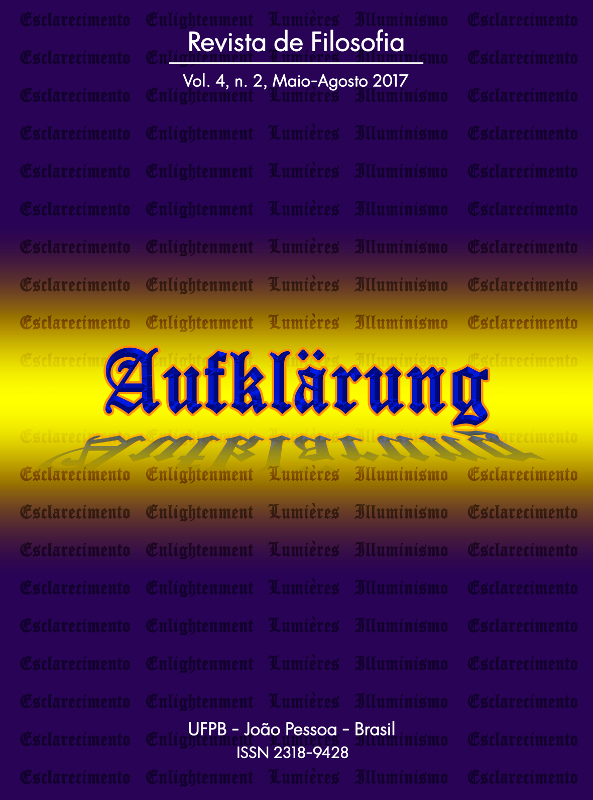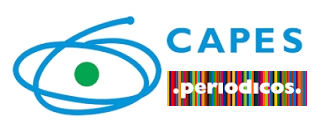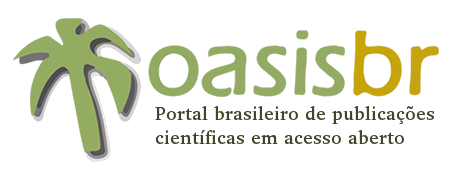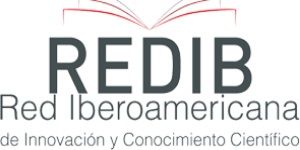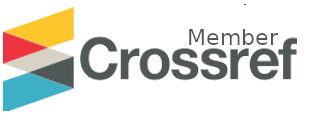O sumo bem e a lei moral
DOI:
https://doi.org/10.18012/arf.2016.33249Keywords:
Kant, moral, sumo Bem, vontadeAbstract
O papel do sumo Bem na moral kantiana tem sido reavaliado, e parte desse processo envolve contato com conceitos fundamentais a ele relacionados, como vontade, lei moral, faculdades superior e inferior de apetição. Com base na argumentação da Crítica da razão prática (1788) e a partir de uma revisão da literatura secundária ligada a esses conceitos auxiliares e à ideia de sumo Bem, confrontaremos alguns lugares comuns na interpretação da moral de Kant, notadamente a ideia de se tratar apenas de uma moral “principialista”, que não confere importância a fins e à felicidade. O que está em jogo não é uma recusa da felicidade, mas o sujeito se tornar digno dela, não tendo-a como critério de moralidade.Downloads
References
BECK, L. W. A commentary on Kant´s Critique of Practical Reason. Chicago and London: The University of Chicago Press, 1963.
BECKENKAMP, J. O jovem Hegel. Formação de um sistema pós-kantiano. Loyola: São Paulo, 2009.
CASSIRER, E. Kant, Vida y Doctrina. Trad. Wenceslau Roces. México: Fondo de Cultura Económica, 1948.
CAYGILL, H. A Kant Dictionary. Hoboken: Blackwell Publishing Ltd., 2000.
EISLER, Rudolf. Kant-Lexikon. France: Bibliothéque de Philosophie: Éditions Gallimard, 1994.
FERRER, S. G. “Die Locke der Antinomie: La sortija de la Antinomia”. Studia Kantiana, n. 13 (2012): 40-55.
FORSCHNER, M.: “Immanuel Kant über Vernunftglaube und Handlungsmotivation”. Zeitschrift für philosophische Forschung, Bd. 59, H. 3 (2005): 327-344. Disponível em: http://www.jstor.org/stable/20484563. Acesso em: 10/01/2013.
HERRERO, F. X. Religião e história em Kant. Trad. José Ceschin. São Paulo: Loyola, 1991.
HÖSLE, V. “Pode-se fazer um relato plausível da história da ética? Uma alternativa a After Virtue, de MacIntyre.” Síntese – Revista de Filosofia, v. 39, n. 125 (2012): 342-378.
________. “Grandeza e limites da filosofia prática de Kant”. Veritas, v. 48 n. 1 (2003): 99-119. (Trad. Luís M. Sander).
KANT, I. Kritik der praktischen Vernunft. Stuttgart: Reclam, 2008.
________. Kritik der reinen Vernunft. Frankfurt am Main: Suhrkamp Verlag, 1974.
KRÖNER, R. Kant’s Weltanschauung. Trans. John Smith. Chicago: The University of Chicago Press, 1956.
LEBRUN, G. Kant e o fim da metafísica. Trad. Carlos de Moura. São Paulo: Martins Fontes, 1993.
O’NEILL, O. “Kant on Reason and Religion”. (1997) : 267-308. Disponível em: http://www.tannerlectures.utah.edu/lectures/documents/oneill97.pdf . Acesso em: 03 Mar. 2011.
PATON, H. G. The Categorical Imperative: a study in Kant’s moral philosophy. Philadelphia: University of Pennsylvania Press, 1971.
SCHNEEWIND, J. B. “Kant and Stoic Ethics”. In. ENGSTROM, S. WHITING, J. (Eds.) Aristotle, Kant, and the Stoics. Cambridge: Cambridge University Press, 1996, pp. 285-301.
SILBER, J. R. “Der Schematismus der praktischen Vernunft”, Kant-Studien, v. 56, n. 3, (1965): pp. 253-273.
________. “Kant's Conception of the Highest Good as Immanent and Transcendent.” The Philosophical Review, v. 68, n. 4 (1959): 469-492. Disponível em: http://www.jstor.org/stable/2182492. . Acesso em : 16 Jan. 2011.
VIEIRA, L. A. “Filosofia prática e incondicionado”. Síntese – Rev. de Filosofia, v. 26, n. 84 (1999): 13-30.
WATKINS, E. “The Antinomy of Practical Reason: reason, the unconditioned and the highest good”. In REATH, A.; TIMMERMAN, J. (eds.) Kant’s Critique of Practical Reason. A critical guide. Cambridge: Cambridge University Press, 2010, pp. 145-167.
WIKE, V. Kant’s Antinomies of Reason: Their Origin and their Resolution. Washington, D.C.: University Press of America, 1982.
Additional Files
Published
How to Cite
Issue
Section
License
Journal general policy
1.This journal works under a Creative Commons License aplied to online journals. That icence can be read in the following link: Creative Commons Attribution 4.0 International (CC BY 4.0).
2.Accordingly to this License, a)the journal declares that authors hold the copyright of their articles without restrictions, and they can archieve them as post-print elsewhere. b)the journal allow the author(s) to retain publishing rights without restrictions.
Metadata Policy for information describing items in the repository
1. Anyone may access the metadata free of charge at anytime.
2.The metadata may be re-used in any medium without prior permission, even commercial purposes provided the OAI Identifier or a link to the original metadata record are given, under the terms of a CC BY license refered for the Journal.

